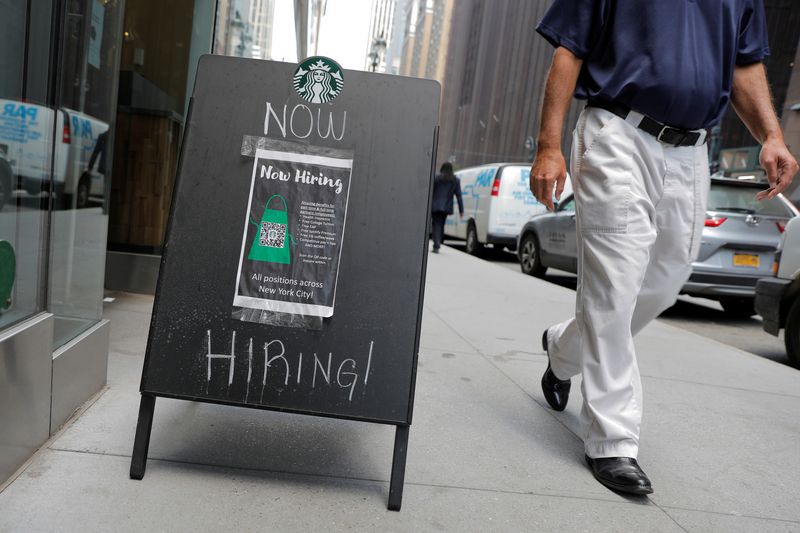U.S. economy adds more jobs than anticipated in February

CME
+0.01%
Add to/Remove from Watchlist
Add to Watchlist
Add Position
Position added successfully to:
Please name your holdings portfolio
Type:
BUY
SELL
Date:
Amount:
Price
Point Value:
Leverage:
1:1
1:10
1:25
1:50
1:100
1:200
1:400
1:500
1:1000
Commission:
Create New Watchlist
Create
Create a new holdings portfolio
Add
Create
+ Add another position
Close
Investing.com — The U.S. economy added more jobs than expected last month, but December and January’s figures were revised sharply lower, pointing to a solid but easing labor market picture that could impact how the Federal Reserve approaches potential interest rate cuts this year.
Nonfarm payrolls rose by 275,000 in February, increasing from a downwardly revised total of 229,000 in January, according to data from the Labor Department’s Bureau of Labor Statistics. Economists had called for a reading of 198,000.
When factoring in January’s updated total and a December number that was lowered by 43,000, the combined employment figure for both months was 167,000 fewer than previously reported, the BLS said.
In February, job gains were widespread across a variety of sectors, including health care, government, food services and transportation, while employment in other major industries like manufacturing and professional services was little changed.
Average hourly earnings grew by 0.1% month-on-month, easing from 0.5% in January and slower than projections of 0.2%. The unemployment rate, meanwhile, climbed to 3.9%. The figure was anticipated to match the previous mark of 3.7%.
U.S. stocks inched higher in early trading on Wall Street following the report. Treasury yields, which typically move inversely to prices, dipped.
Friday’s numbers — along with private payrolls, job openings and unemployment claims earlier this week — seemed to underscore an emerging image of an American jobs market that is resilient yet softening.
“[B]ig downward revisions, weak wages and rising unemployment suggest things are not quite as robust as the headline indicates,” analysts at ING said in a note.
Fed policymakers will likely be keeing close tabs on this trend. Signs of cooling labor demand — and, in theory, moderating upward pressure on inflation from wages — could bolster the case for the Fed to begin ratcheting down borrowing costs from more than two-decade highs in 2024.
But officials at the central bank have recently been keen to stress that they are in no rush to roll out cuts. In two days of testimony on Capitol Hill this week, Fed Chair Jerome Powell Powell backed a patient and cautious outlook on the Fed’s fight to bring U.S. inflation back down to its stated 2% target.
But, crucially, he noted that the Fed is “not far” from having the confidence it needs that price gains are sustainably moving towards that goal.
“When we do get that confidence […] it will be appropriate to begin to dial back the level of restriction so that we don’t drive the economy into recession,” Powell told lawmakers.
The comments were interpreted as an indication that rate cuts remain likely this year. Markets, who started off 2024 expecting a reduction some time in the spring, have since had to recalibrate their bets. According to CME Group’s (NASDAQ:CME) closely-monitored FedWatch Tool, the Fed is now not expected to slash rates until its June meeting.
“It’s not enough for the Fed to relax just yet, but we think things will be in place for a June rate cut,” the ING analysts said.








